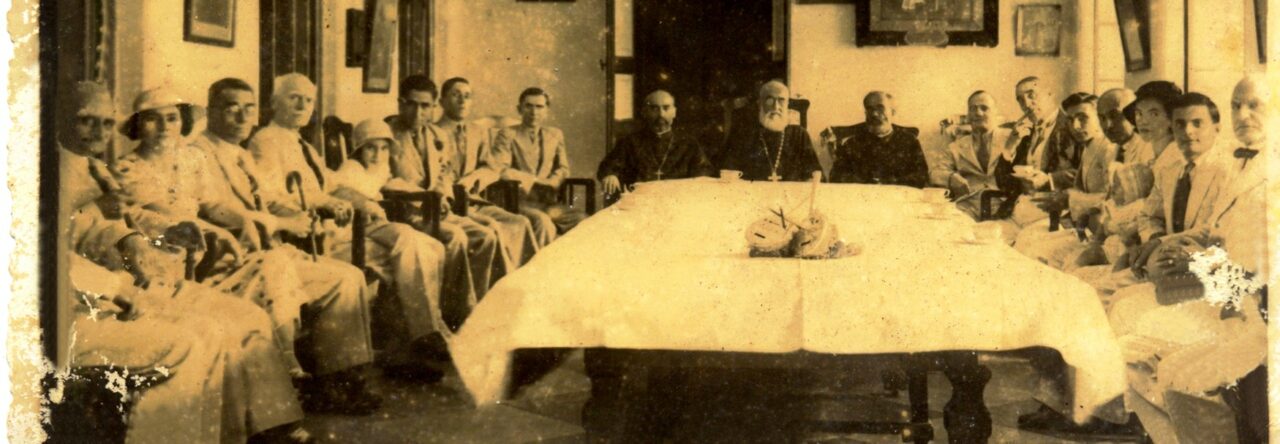
Armenian Cemetery Surat
In 1895 Mesrovb Seth wrote: “…….In Surat, the Armenians erected two churches – one in the city, which is still preserved, but is not now used; and the other which lies in ruins, in their cemetery…….”
There are traces of an Armenian settlement in the city during the 16th century. In the Armenian cemetery at Surat, which adjoins the cemeteries of the early British and Dutch, there is a tombstone of an Armenian lady who died there in 1579 A.D. The inscription which is in Ancient Armenian translates: “In this tomb lies buried the body of the noble lady, who was named Marinas, the wife of the priest Woskan. She was a crown to her husband, according to the proverbs of Solomon. She was taken to the Lord of Life, a soul-afflicting cause of sorrow to her faithful husband, in the year one thousand and twenty eight of our Armenian era, on the fifteenth day of November at the first hour of Friday, at the age of 53. Ye who see this tomb, pray to the Lord to grant mercy”. The year 1028 of the Armenian era is equivalent to the year 1579 A.D. Her husband, Rev. Woskan, must have been the spiritual head of the Armenians living at Surat during the reign of Akbar, the patron of their race.
If there was an Armenian priest in Surat in 1579 then there must have been a church or a chapel. Accordingly to an unconfirmed source, the old Armenian church at Surat was destroyed by the Mogul governor at the instigation of the Turkish merchants who came to Surat, after their pilgrimage to Mecca, for the purpose of buying goods. However, evidence of an Armenian Church can be seen on page 297 of the English Factories in India (1661-1664) which is digitised, click to follow the link) there is a rough map of Surat, (which is reproduced below) showing the positions of the prominent buildings at the time of Sivaji’s first raid on the city, in early January 1664, in which the Armenian Church is clearly shown.

Surat rough map
The Legend marked on the map is as follows.
-
The English Factory of that time which stood in the north-western part of the city, in what was known in 1937 as the Mullah’s Ward.
-
The Sarai and the mosqueof Mirza Zahid still standing
-
A building known as the Dadhimar or Racket Court. It was originally a sarai and may have been the one in which some Armenians and Turkish merchants secured themselves and their goods during the raid.
-
The Armenian Church
-
Shows the position of the French factory established a little later
-
Is the site of the subsequent English factory, near the Mullas’ Water Gate.
During the interval between destruction of the old church and the erection of a new church in 1778 dedicated to the Virgin Mary, the Armenian residents of Surat held divine services at a house set apart for the purpose.
The church built in 1778 was pulled down some years later (after 1907) by the wardens of the Armenian church of Bombay, as it had fallen into disrepair and the site was later used as a playground for school children. The Armenian scholar and writer Mesrovb J. Seth visited the church in January 1907 and observed that “it was still standing, although a portion of the roof had fallen, but the altar, the sacristies (vestries) on either side of the altar, the gallery for ladies on the west side of the church, were in a fair state of preservation, as also the priest quarters on the left side of the main gate.” He continued “the beautiful church, with historical associations, was, in the absence of devout worshippers, found in the indisputable possession of thousands of owls, bats, crows, cats, rats, snakes and scorpions which howled, screeched, and hissed ominously when the present writer, at the risk of his life, entered the sacred edifice where his revered grandfather, Seth Mackertich Agazar Seth, had worshipped during the last quarter f the 18th century.” Seth continues “there is a Mortuary chapel in the Armenian cemetery at Surat which is still standing and it will continue to exist as a valuable landmark of the once-flourishing Armenian colony in that historic city, because it has fortunately come under the control of the Public Works Department as a “Protected Monument” thanks to the solicitude of the late Lord Curzon for the Preservation of Ancient Monuments in India. We could find no date, either inside or outside the beautiful chapel, showing the year of its construction, but in all probability it must have been erected during the 17th century, because there is a grave inside that chapel, with a tombstone bearing the date 1695.
Khojah Phanoos Kalandar, the “Armenian merchant of eminency”, as the English called him, was a native of Julfa (Ispahan) but had settled down at Surat, where his only son’s grave, in the mortuary chapel at the Armenian cemetery bears an inscription in classical Armenian of which the following is a translation: “This is the tomb of Kalandar, the son of Phanoos Kalandar of Julfa who departed this life on Saturday, the 6th March 1695″”
